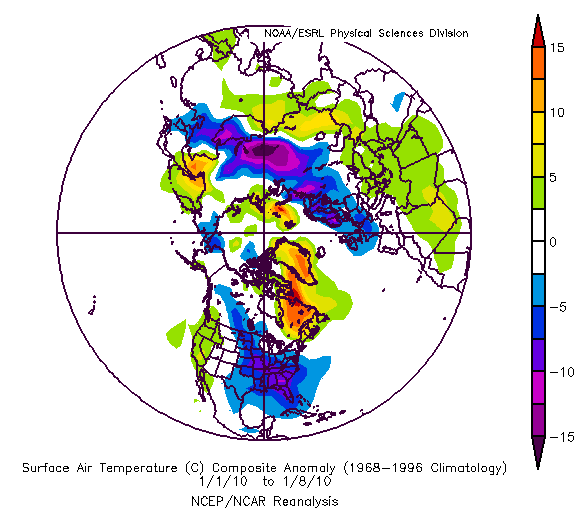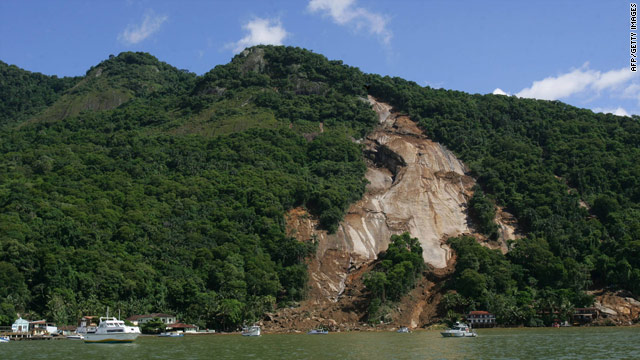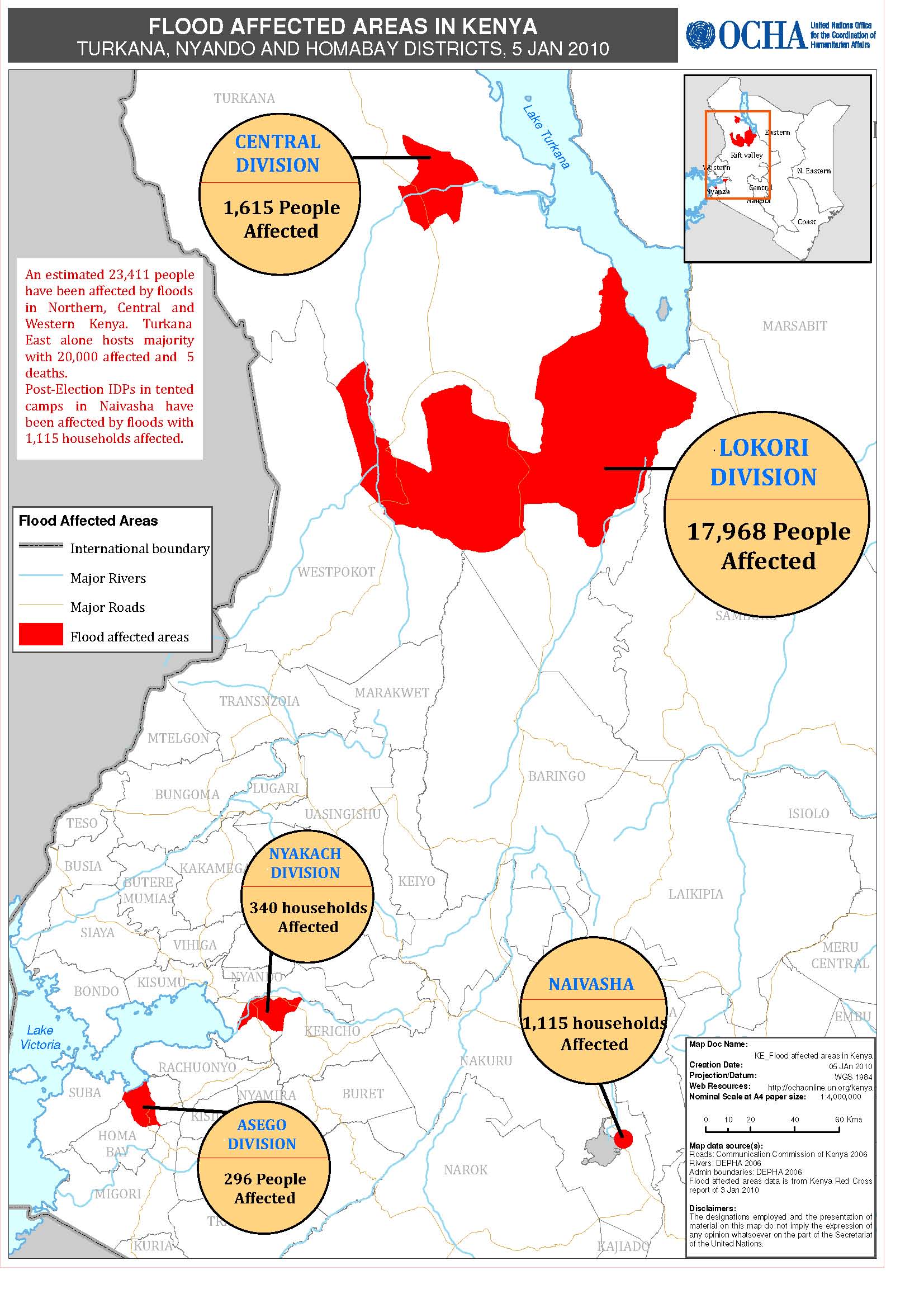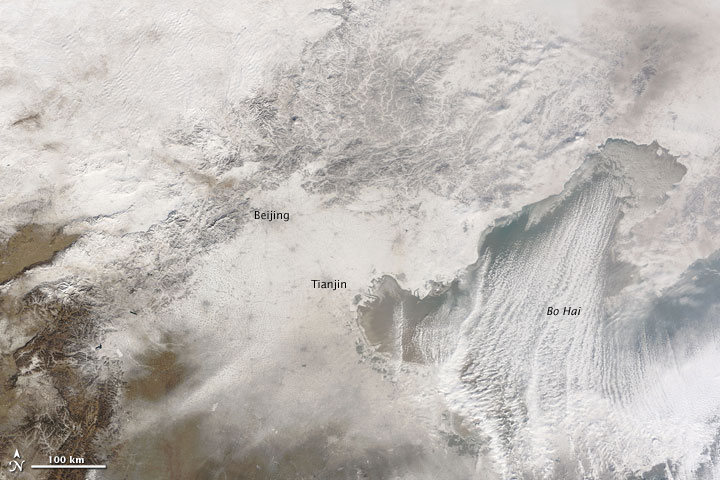Updated 8 February 2010

During January, the eastern third of the U.S. remained generally drought free, with abnormally dry conditions in eastern Florida being eliminated, and the drought signatures in the western Great Lakes region and southern Texas shrinking. A series of strong storms moved onshore from the Pacific the third week of January, bringing much needed precipitation to the drought stricken western third of the country. Many reservoirs in California that have been below normal for several consecutive years experienced significant recovery due to the precipitation. Improvements of 1-2 categories on the U.S. Drought Monitor map were common in Oregon, California, Arizona, Nevada, Utah, New Mexico, and southern Colorado. In contrast abnormally dry conditions were expanded in the northern Rockies in Idaho, Wyoming, and northern Colorado. Dry conditions in Hawaii continued the ongoing drought across the state causing the extreme drought category to be expanded from the Big Island to the other islands. Parts of the Big Island were forced to implement public water conservation measures. Alaska was also dry for the month, leading to the expansion of abnormally dry conditions. According to the U.S. Drought Monitor as of January 26th, 7.8 percent of the country (including Alaska, Hawaii, and Puerto Rico) was in drought, 22.0 percent was abnormally dry, and 70.2 percent was drought free.

Cool temperatures in Nepal, northern India, and northern Bangladesh were blamed for the deaths of at least 166 people on January 3rd through 6th, as the poor and homeless in those countries were not prepared to handle the extreme cold (Source: BBC). Temperatures dropped to 30 °F (-1 °C) for several nights in the region, with daily mean temperatures 11 °F to 18 °F ( 6 °C to 10 °C) below normal. Up to four inches (10 cm) of snow was reported along lower elevations in Himachal Pradesh, India on January 3rd — a rare occurrence for the region.
A strong cold snap hit a large portion of the United States the first two weeks of January, affecting states from Minnesota to Florida. A notable record minimum temperature occurred in Key West, Florida, where the thermometer dipped to 42 °F (6 °C) on the morning of January 11th. This was the second lowest temperature ever recorded at the most southern weather station in the contiguous United States. The coldest temperature ever observed at the station was 41 °F (5 °C) in both January 1981 and 1886, with records dating back to 1873. Citrus crops, a 9.3 billion dollar industry in Florida, were hit hard when temperatures in the northern part of the state were 28 °F (-2 °C) for over six hours during several nights. Florida provides 75 percent of the oranges consumed in the U.S. and 40 percent of the world’s orange juice. Widespread snow and sleet were also reported across Florida, including the city of Orlando — a very rare event for the state. The cold snap also brought unusual snow to the Atlanta area. "America’s Ice Box" (International Falls, Minnesota) set a daily record low temperature of -37 °F (-38 °C) on both the 2nd and 3rd. Hundreds of records for daily minimum temperatures were broken across the eastern two-thirds of the United States. Airports in Hondo and Sotulla La Salle, Texas broke all-time record low temperatures on the morning of January 9th. Several weather stations across the Gulf Coast set records for consecutive days of extremely cold temperatures, including Montgomery, Mobile, and Pensacola. Please see the NCDC's U.S. records page for additional information.
While much of the Northern Hemisphere was experiencing anomalously cool temperatures, parts of Australia had record warmth. On January 11th, the daily minimum temperature at Melbourne dropped to only 93 °F (34 °C), marking the warmest night in the city since 1902. Temperatures during the day reached 108 °F (42 °C) in the states of Victoria, New South Wales, South Australia, and Western Australia. Tens of thousands of people in and around Melbourne lost power due to the high energy demand of air conditioners. In Victoria, nearly 200 heat related illnesses were reported (Source: The Age). Reports of small brush fires in South Australia incited code red fire warnings.
A severe cold snap and heavy snowfall affected Mongolia the first three weeks of January. Over 1 million livestock were killed in the country, increasing fears of a lagging food supply (Source: BBC). The poor nation was hard hit by drought during the summer, not allowing residents to stock up for the winter months. Temperatures in Mongolia were as low as -40 °F (-40 °C). The neighboring Chinese province of Xinjiang was also hard hit, with 13 people reported dead from the weather conditions (Source: BBC). In this same region, 161,000 people were evacuated due to avalanche fears and to escape the cold.

Floods and over 80 different mudslides on January 1st and 2nd in southeast Brazil killed at least 76 people in the Sao Paulo, Rio De Janeiro, and Minas Gerais states. Over 200 houses at Angra dos Reis were deemed uninhabitable by local authorities, leaving 125 homeless and leading to the evacuation of another 238. The direct losses were estimated to be up to 145 million U.S. dollars.
Heavy rainfall the first week of January in the Rift Valley province of Kenya left 38 people dead and 40,000 people homeless and in dire need of food aid (Source: Reuters). Significant damage to crops and livestock were also reported. The flooding heightened concerns of a cholera outbreak in the Turkana district, which was hard hit by the illness in December. The year 2009 brought record drought to parts of Kenya, devastating crops and wild life populations. The heavy rainfall is expected to alleviate a significant portion of the drought across the country.
Heavy rain fell in Egypt and Israel on January 18th through 21st, leading to the worst flooding in over a decade for the region. At least 15 people were reported killed by the flooding and another 14 were missing (Source: BBC). The heavy rains swept away about 700 homes and left tourists stranded in resort towns. Rain accumulations of about 2.8 inches (7 cm) were widespread across Israel, including the city of Jerusalem, which typically receives 4.3 inches (11 cm) annually.
Heavy rainfall in Peru and Bolivia the last week of January caused flooding and mudslides, and left at least 30 people dead. Nearly 62,000 people in the Andes region have been affected (Source: BBC). Four thousand tourists were stranded near the ancient Incan ruins of Machu Picchu in Peru. Roads and railways have been wiped out, making rescue missions even more difficult. The Associated Press reported that nearly 4,700 houses and 40,000 acres of crops were destroyed. The typically gentle Urubamba River, which flows past Machu Picchu, flowed at its highest recorded height. Peru is expected to take a large economic hit as tourism to the region will be suspended for months. Bolivian officials were concerned about dams in the Santa Cruz region, where water levels were within inches of breaching several dams (Source: AFP). Weather officials in Bolivia claim the unusually heavy rainfall was related to the ongoing El Niño event. Please see the Climate Prediction Center's El Niño report for additional information.

A series of intense extratropical cyclones affected the west coast and southwest region of the United States from January 17th through 23rd. Rainfall amounts over 12 inches (30 cm) and snow accumulations over four feet (122 cm) were reported across the higher terrain in the region. Wildfires last year left many hillsides vulnerable and without vegetation. The heavy rainfall and wind prompted around 800 mandatory evacuation orders in Southern California due to a fear of landslides (Source: BBC). The rain also affected portions of northwest Mexico where, in Tijuana, 10 people were reported missing and one dead (Source: Reuters). Severe thunderstorms were also present with these weather systems, with seven tornadoes being reported in California. The third and last storm of the series broke numerous records across the West, including all-time record low pressures over roughly 10–15 percent of the United States. Some of the most notable cities setting record low pressures included: Los Angeles (983.3 mb), San Diego (987.0 mb), Salt Lake City (979.9 mb), Las Vegas (983.0 mb), and Phoenix (983.0 mb). This storm also brought strong winds, gusting over 90 mph (145 km/hr) in parts of Arizona and California. Strong storms in the region are not unusual during winters with a warm phase ENSO cycle (El Niño). Please see the Climate Prediction Center's El Niño report for additional information.

A strong winter storm hit portions of northern China, North Korea, and South Korea on January 2nd and 3rd. Central Beijing received 3 inches (8 cm) of snow on the 2nd, the most for a single day since January 1951, while suburbs of the city reported 13 inches (33 cm). Over 90 percent of flights at Beijing’s International Airport were affected. After the storm passed, temperatures in Beijing plummeted to -1 °F (-18 °C) on the night of January 4th, and some areas of China had temperatures as low as -26 °F (-32 °C). Eleven inches (28 cm) of snow fell in Seoul, South Korea on the 3rd, marking the greatest snowfall amount for that city since records began in 1937 (Source: BBC).
A prolonged and severe cold snap, as well as snowy weather, that began in December across Europe, continued into the New Year. The Geneva airport, which services the busy Alpine ski resorts, was forced to close over the weekend of January 8th due to the heavy snow. In Poland, at least 200,000 households were without power, where 59 inches (1.5 meters) of snow was reported in Leszno. A Polish police spokesperson said that 152 people froze to death in Poland (Source: BBC). Over 90 percent of flights at Germany’s busiest, and Europe’s third busiest, airport in Frankfurt were cancelled on the 8th. On January 10th, over 160 people were trapped in their cars along a German highway in snow drifts as deep as 79 inches (2 meters). At least 25 people died in Britain due to weather-related incidents (Source: BBC). Up to 16 inches (41 cm) of snow fell across portions of the United Kingdom, with most of Great Britain under snow cover. The U.K. Met Office claimed this was the longest cold snap since 1981. Snow was reported as far south as Seville, Spain for the first time in 50 years.
A rare summer snowfall occurred on January 18th in the town of Bombala, New South Wales, Australia. The town received a light dusting of accumulation, marking the first summer snow in the high terrain of southeast Australia since records began in 1965. The town has an elevation of around 3,000 feet (900 meters) above sea-level. Forecasters said that snow at such low elevations is unusual at any time of year, especially summer. The snow caused little disruption in the sparsely populated region. In the week prior to the snowfall, temperatures in the region exceeded 113 °F (45 °C).
A large winter storm moved in a nearly straight line across the southern U.S., bringing wintry precipitation from New Mexico to New Jersey on January 28th through 31st. Snow accumulations of greater than 10 inches (24.5 cm) were widespread. Several major interstates were forced to close, including large stretches of Interstate 40, an important east-west transportation artery for the country. Hundreds of thousands of people lost power due to impacts from the storm. Several deaths were reported as direct impacts of the storm, including traffic accidents and trees falling on homes due to the weight of the ice and snow (Source: CNN).
 NOAA's National Centers for Environmental Information
NOAA's National Centers for Environmental Information













